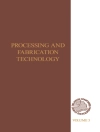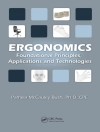Lazare Carnot was the unique example in the history of science of someone who inadvertently owed the scientific recognition he eventually achieved to earlier political prominence. He and his son Sadi produced work that derived from their training as engineering and went largely unnoticed by physicists for a generation or more, even though their respective work introduced concepts that proved fundamental when taken up later by other hands. There was, moreover, a filial as well as substantive relation between the work of father and son. Sadi applied to the functioning of heat engines the analysis that his father had developed in his study of the operation of ordinary machines. Specifically, Sadi’s idea of a reversible process originated in the use his father made of geometric motions in the analysis of machines in general.
This unique book shows how the two Carnots influenced each other in their work in the fields of mechanics and thermodynamics and how future generations of scientists have further benefited from their work.
Содержание
From the Contents: Biographical Sketch of Lazare Carnot.- The Science Of Machines: Summary of Essai sur les machines en général.- Geometric motions.- Moment–of –Momentum.- Moment–of–Activity–The concept of work.- Practical conclusions.- The Development Of Carnot’s Mechanics: Argument of the 1778 Memoir on theory of machines.- Argument of the 1780 Memoir.












